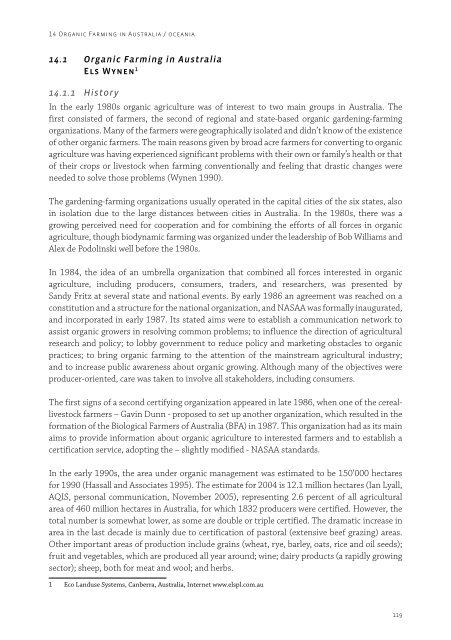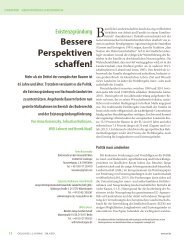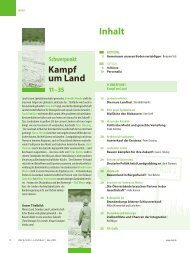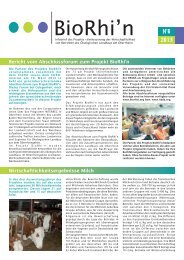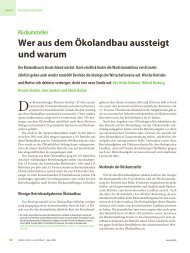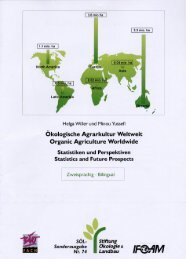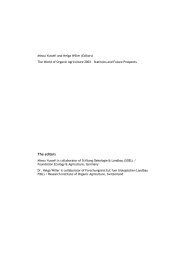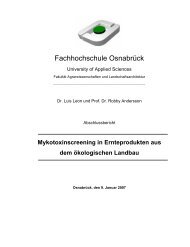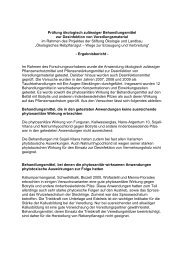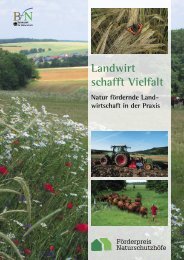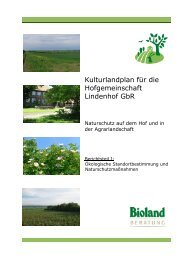the world of organic agriculture - Organic Eprints
the world of organic agriculture - Organic Eprints
the world of organic agriculture - Organic Eprints
Create successful ePaper yourself
Turn your PDF publications into a flip-book with our unique Google optimized e-Paper software.
14 <strong>Organic</strong> Farming in Australia / oceania<br />
14.1 <strong>Organic</strong> Farming in Australia<br />
Els Wynen 1<br />
14.1.1 History<br />
In <strong>the</strong> early 1980s <strong>organic</strong> <strong>agriculture</strong> was <strong>of</strong> interest to two main groups in Australia. The<br />
first consisted <strong>of</strong> farmers, <strong>the</strong> second <strong>of</strong> regional and state-based <strong>organic</strong> gardening-farming<br />
organizations. Many <strong>of</strong> <strong>the</strong> farmers were geographically isolated and didn’t know <strong>of</strong> <strong>the</strong> existence<br />
<strong>of</strong> o<strong>the</strong>r <strong>organic</strong> farmers. The main reasons given by broad acre farmers for converting to <strong>organic</strong><br />
<strong>agriculture</strong> was having experienced significant problems with <strong>the</strong>ir own or family’s health or that<br />
<strong>of</strong> <strong>the</strong>ir crops or livestock when farming conventionally and feeling that drastic changes were<br />
needed to solve those problems (Wynen 1990).<br />
The gardening-farming organizations usually operated in <strong>the</strong> capital cities <strong>of</strong> <strong>the</strong> six states, also<br />
in isolation due to <strong>the</strong> large distances between cities in Australia. In <strong>the</strong> 1980s, <strong>the</strong>re was a<br />
growing perceived need for cooperation and for combining <strong>the</strong> efforts <strong>of</strong> all forces in <strong>organic</strong><br />
<strong>agriculture</strong>, though biodynamic farming was organized under <strong>the</strong> leadership <strong>of</strong> Bob Williams and<br />
Alex de Podolinski well before <strong>the</strong> 1980s.<br />
In 1984, <strong>the</strong> idea <strong>of</strong> an umbrella organization that combined all forces interested in <strong>organic</strong><br />
<strong>agriculture</strong>, including producers, consumers, traders, and researchers, was presented by<br />
Sandy Fritz at several state and national events. By early 1986 an agreement was reached on a<br />
constitution and a structure for <strong>the</strong> national organization, and NASAA was formally inaugurated,<br />
and incorporated in early 1987. Its stated aims were to establish a communication network to<br />
assist <strong>organic</strong> growers in resolving common problems; to influence <strong>the</strong> direction <strong>of</strong> agricultural<br />
research and policy; to lobby government to reduce policy and marketing obstacles to <strong>organic</strong><br />
practices; to bring <strong>organic</strong> farming to <strong>the</strong> attention <strong>of</strong> <strong>the</strong> mainstream agricultural industry;<br />
and to increase public awareness about <strong>organic</strong> growing. Although many <strong>of</strong> <strong>the</strong> objectives were<br />
producer-oriented, care was taken to involve all stakeholders, including consumers.<br />
The first signs <strong>of</strong> a second certifying organization appeared in late 1986, when one <strong>of</strong> <strong>the</strong> cereallivestock<br />
farmers – Gavin Dunn - proposed to set up ano<strong>the</strong>r organization, which resulted in <strong>the</strong><br />
formation <strong>of</strong> <strong>the</strong> Biological Farmers <strong>of</strong> Australia (BFA) in 1987. This organization had as its main<br />
aims to provide information about <strong>organic</strong> <strong>agriculture</strong> to interested farmers and to establish a<br />
certification service, adopting <strong>the</strong> – slightly modified - NASAA standards.<br />
In <strong>the</strong> early 1990s, <strong>the</strong> area under <strong>organic</strong> management was estimated to be 150’000 hectares<br />
for 1990 (Hassall and Associates 1995). The estimate for 2004 is 12.1 million hectares (Ian Lyall,<br />
AQIS, personal communication, November 2005), representing 2.6 percent <strong>of</strong> all agricultural<br />
area <strong>of</strong> 460 million hectares in Australia, for which 1832 producers were certified. However, <strong>the</strong><br />
total number is somewhat lower, as some are double or triple certified. The dramatic increase in<br />
area in <strong>the</strong> last decade is mainly due to certification <strong>of</strong> pastoral (extensive beef grazing) areas.<br />
O<strong>the</strong>r important areas <strong>of</strong> production include grains (wheat, rye, barley, oats, rice and oil seeds);<br />
fruit and vegetables, which are produced all year around; wine; dairy products (a rapidly growing<br />
sector); sheep, both for meat and wool; and herbs.<br />
1 Eco Landuse Systems, Canberra, Australia, Internet www.elspl.com.au<br />
119


